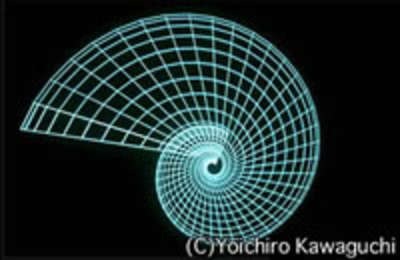Yoichiro Kawaguchi began in 1975 to program simple line drawings using FORTRAN when he was a student in a painting program at Kyushu Art and Design University in Fukuoka, Japan. He did his senior research project on computer graphics software, and completed his first animated film (Pollen, 1975). Kawaguchi went right on to graduate school at Tokyo University of Education.
Before Kawaguchi began experimenting with growth algorithms, there were programs that produced simple line drawings of trees and such, but when combined with polygonal models, three-dimensional forms were the result. By substituting a cylinder for a line, and a cone for a point, three-dimensional tree-like forms were randomly constructed using recursive algorithms. Kawaguchi found a great deal of support and enthusiasm for his work through the engineering department at Osaka University. Kawaguchi collaborated with Koichi Omura, a professor of engineering at Osaka University, where a new form of surface rendering was developed into the Meta-ball program. The Meta-ball software was based on implicit surfaces instead of polygonal surfaces (conceptual spheres, rather than flat planes). By combining Kawaguchi’s 3D growth algorithms with the Meta-ball software, life-like forms with organic surfaces were produced. These ever-changing organisms have become the trademark of Kawaguchi’s work.
333
(source: http://dam.org/dox/2462.ySafC.H.1.De.php)




